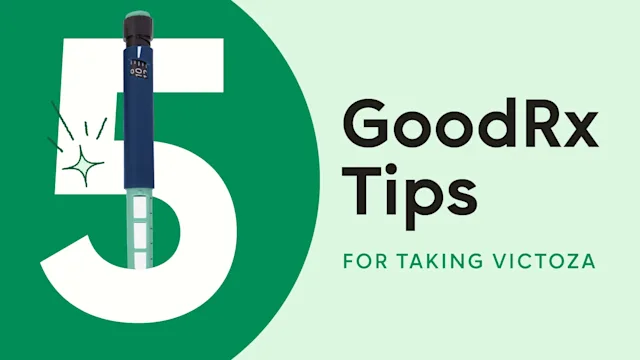Key takeaways:
Diabetes can cause hair loss. It can lower blood flow to your scalp, change your hair growth cycle, and damage hair follicles. These can all lead to hair loss.
Diabetes hair loss can look like overall hair thinning, patterned hair loss, or patchy hair loss.
Treating diabetes and using remedies for hair loss can all help hair grow back.
Most people don’t think of hair loss as a symptom of diabetes. But there are connections between diabetes and hair loss. Sometimes, high blood sugar can directly lead to hair loss. And diabetes may also increase your risk for other conditions that impact hair growth.
If you’re dealing with hair loss from diabetes, there are things you can do to help hair regrow. Let’s look at how diabetes can cause hair loss and what you can do about it.
How does diabetes cause hair loss?
There are a few reasons why diabetes can contribute to hair loss.
Poor blood flow to the scalp
Over time, high blood sugar can damage blood vessels in your body. This is why people with diabetes have a higher risk for developing heart disease and stroke.
High blood sugar can also damage small blood vessels, like the ones in your scalp. Damaged blood vessels deliver less blood to your body, and less nutrients and oxygen to your hair follicles. This leads to hair follicle damage and damaged hair follicles can’t grow hair.
Hormone changes
People with Type 2 diabetes experience insulin resistance, which is when cells have trouble responding to insulin like they should. As a result, your body may start to overproduce insulin to try and send a stronger signal to your cells.
Researchers believe that high insulin levels cause hormone changes that lead to hair loss. Studies have shown that people with insulin resistance are more likely to have patterned hair loss.
Changes in the hair growth cycle
It’s not just high levels of insulin that seem to cause hair loss. Very low levels of insulin can interrupt the normal hair growth cycle.
Research shows that without insulin hair follicles move more quickly into the resting phase. This alteration in the hair growth cycle reduces hair growth and can lead to hair thinning. This may be one reason people with Type 1 diabetes also have hair loss.
Diabetes can affect your skin too. Learn about common skin changes caused by diabetes.
Trying to lower your hemoglobin A1C? Here are science-backed ways to lower your A1C levels.
Ready to take the next step for your hair health? Our guide can help you find the right hair loss treatment.
Physical stress
Some people aren’t diagnosed with diabetes until their blood sugar is very high and causes other health problems.
A serious or sudden illness can lead to a form of hair loss called telogen effluvium. Telogen effluvium, or stress related hair loss, develops when more hair follicles than usual enter the resting phase. This causes hair thinning and temporary hair loss. Hair follicles will switch back into a normal growth phase, but this can take weeks to months.
Other medical conditions
People with Type 1 diabetes are at higher risk for having other autoimmune conditions like alopecia areata, which results in patchy hair loss. They’re also at higher risk for developing autoimmune thyroiditis, which can cause hair loss if it’s not treated.
Save on medications with GoodRx
What does hair loss from diabetes look like?
Hair loss from diabetes can show up in a few different ways. People with diabetes may notice:
Patterned hair loss: Patterned hair loss is also called androgenic alopecia. It starts as thinning at the front and sides of the scalp in men. In women, it often shows up as thinning on the crown of the head.
Patchy hair loss: This is when hair falls out in patches. You may develop patchy hair loss if you have another autoimmune condition along with diabetes that causes hair loss.
Hair thinning: Hair thinning develops all over the scalp. It’s more even and spread out compared to patterned or patchy hair loss.
Can hair loss from diabetes get better?
Yes, hair loss from diabetes can get better with treatment. One study found that treating insulin resistance with tirzepetide helped people grow their hair back. Another case report found that starting therapy with insulin helped reverse hair loss.
Tips for improving hair growth with diabetes
Hair loss can be very distressing. It’s normal to want to do everything you can to get your hair back. Here are some tips that can help you regrow your hair.
Start diabetes treatment
There are lots of reasons to work on lowering your blood sugar if you have diabetes. Better blood sugar control lowers your risk of serious complications like heart disease, chronic kidney disease, and peripheral neuropathy. Good blood sugar control may also help your hair grow back.
Try hair loss treatments
You can use other proven hair loss medications to help regrow your hair:
Minoxidil (Rogaine) is a topical over-the-counter (OTC) medication that is FDA approved for hair regrowth.
Finasteride (Propecia) is an oral prescription medication that may help reverse hair loss.
Your healthcare team can help you find the right option.
Choose the right shampoo
You can support hair regrowth by choosing products that keep your scalp healthy. Avoid shampoos with harsh ingredients like formaldehyde or DMDM hydantoin, which may cause more hair loss.
Instead, consider using shampoos with pyrithione zinc or selenium sulfide. These ingredients have been shown to help reduce dandruff, which may also help with hair growth.
Try natural remedies
Some people prefer to try natural remedies for hair regrowth. Although there’s less evidence that these treatments help hair grow back, they tend to be safe to try. For a natural remedy, try rosemary oil for hair growth, or products containing caffeine or melatonin.
Get help
There are many reasons for hair loss. Talk with your healthcare team if you’re experiencing hair thinning or patchy hair loss. They can make sure you don’t have other medical conditions that might cause hair loss. They can also help you find the best treatment.
Frequently asked questions
Yes, diabetes can increase your risk of developing peripheral artery disease (PAD). Peripheral artery disease is when the blood vessels have trouble sending enough oxygen and nutrients to your limbs. One sign of PAD is hair loss on your legs.
It’s not clear which type of diabetes is more likely to cause hair loss. But Type 2 diabetes is more common than Type 1 diabetes, so you may hear about Type 2 diabetes and hair loss more often.
Yes, there’s evidence that insulin resistance or prediabetes can increase the risk of hair loss.
Yes, diabetes can increase your risk of developing peripheral artery disease (PAD). Peripheral artery disease is when the blood vessels have trouble sending enough oxygen and nutrients to your limbs. One sign of PAD is hair loss on your legs.
It’s not clear which type of diabetes is more likely to cause hair loss. But Type 2 diabetes is more common than Type 1 diabetes, so you may hear about Type 2 diabetes and hair loss more often.
Yes, there’s evidence that insulin resistance or prediabetes can increase the risk of hair loss.
The bottom line
There are several ways that diabetes can cause hair loss. It can damage blood vessels in your scalp, which bring oxygen and nutrients to your hair follicles. And high or low insulin levels can affect the natural hair growth cycle. In addition to getting treatment for diabetes, there are many ways you can tackle hair loss directly. Your healthcare team can help evaluate you for any other causes of hair loss and help you find the best treatment to support hair regrowth.

Why trust our experts?


References
American Endovascular & Amputation Prevention. (n.d.). Hair loss on legs.
Berger, R. S., et al. (2003). The effects of minoxidil, 1% pyrithione zinc and a combination of both hair density: A randomized controlled trial. British Journal of Dermatology.
Bullard, K. M., et al. (2018). Prevalence of diagnosed diabetes in adults by diabetes type — United States, 2016. Centers for Disease Control and Prevention.
Fischer, T. W., et al. (2012). Topical melatonin for treatment of androgenetic alopecia. International Journal of Trichology.
Gonzalez-Saldivar, G., et al. (2017). Skin manifestations of insulin resistance: From a biochemical stance to a clinical diagnosis and management. Dermatology and Therapy.
Gordon, E. R., et al. (2024). Treatment of insulin resistance with tirzepatide leading to improvement of hair loss. JAAD Case Reports.
Ho, C. H., et al. (2024). Androgenetic Alopecia. StatPearls.
Hoover, E., et al. (2023). Physiology, hair. StatPearls.
International Society of Hair Restoration Surgery. (n.d.). Minoxidil: Formulation, dosages & side-effects.
Matilainen, V., et al. (2003). Hair loss, insulin resistance, and heredity in middle-aged women. A population-based study. Sage Journals.
Miranda, J. J., et al. (2017). Hair follicle characteristics as early marker of type 2 diabetes. Medical Hypothesis.
Mohr, D. C., et al. (2022). Association of hemoglobin A1c time in range with risk for diabetes complications. BMJ Open Diabetes Research and Care.
Nozawa, K., et al. (2022). Association between AbA1c levels and diabetic peripheral neuropathy: A case-control study of patients with type 2 diabetes using claims data. Drugs Real World Outcomes.
Ravi, K., et al. (2021). Reversal of alopecia by insulin therapy in uncontrolled type 2 DM a case report. Journal of Diabetology.
Volker, J. M., et al. (2020). Caffeine and its pharmacological benefits in the management of androgenetic alopecia: A review. Skin Pharmacology and Physiology.
Walter, K. (2022). Common causes of hair loss. JAMA Network.
Wohl, Y., et al. (2025). Alopecia Areata Is Associated with an Increased Risk for Prediabetes and Obesity: A Nationwide Case-Control Study. Journal of Personalized Medicine.














